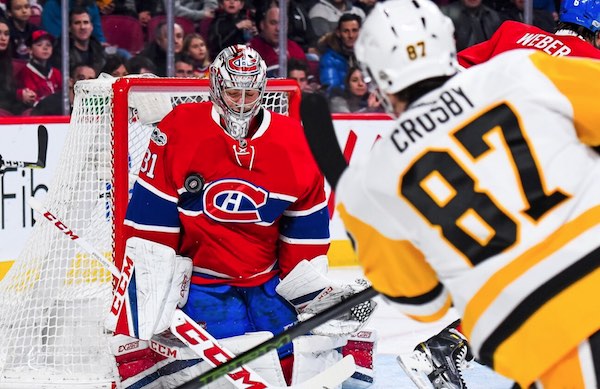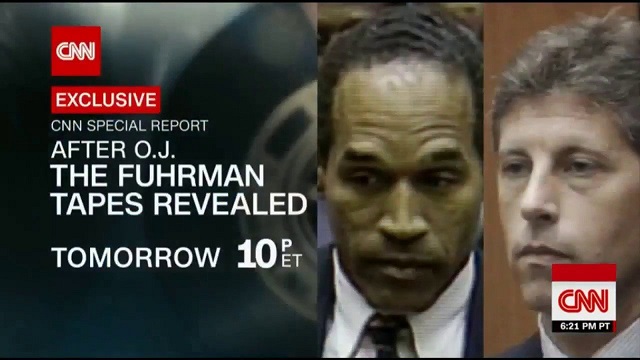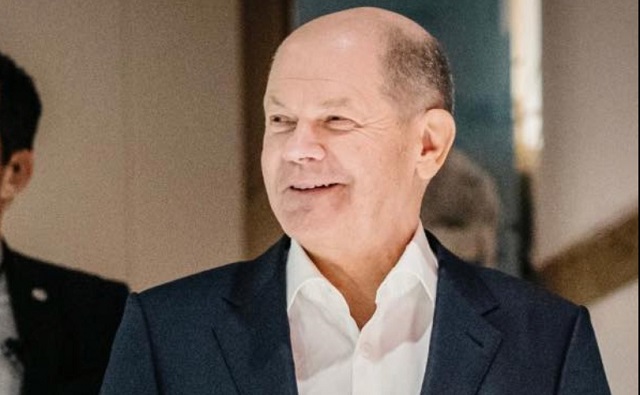Bruce Dowbiggin
Book Excerpt: The Price Was Right– Even Without A Cup

The NHL season has begun, for the time being, without Pittsburgh’s star Sidney Crosby and Montreal’s goalie Carey Price. Crosby is rehabbing from surgery on his wrist while Price has entered the NHL/ NHLPA assistance program. Crosby should be back in a few games while there is no timetable for the return of Price to the Canadiens.
Ironically the two men are also conjoined by their status as star products of the 2005 NHL amateur draft, held at the tail end of the 2004-2005 Gary-Bettman orchestrated lockout that scrubbed an entire season. Along with Anze Kopitar, Tuuka Rask and Kris Letang they highlight the best products of that draft— held in private at a hotel.
As my son Evan and I describe in out new book InExact Science: The Six Most Compelling Draft Years in NHL History (ECW, ) the Penguins were there lucky winers of a Crosby sweepstakes as controversial new selection rules caused by the lockout determined that the Pens got Sid The Kid (Bobby Ryan went #2 to Anaheim). The result has been three Pittsburgh Stanley Cups (2009, 2016, 2017) and Crosby’s status as one of the Top 10 players of all time.

Price, meanwhile, was the product of a gamble on a goalie by the Canadiens scouts, who chose him a lofty fifth overall. While Price has proven an elite goalie, winning the Hart Trophy and Olympic gold medals, his selection upset Habsland. While that controversy has subsided, he has yet to win a Cup in Montreal. Last spring’s unlikely run to the Finals by the Habs is the closest he’s come to an NHL title. Meanwhile, Jonathan Quick, chosen #72 overall by the Kings in 2005, has two rings to his name.
In this excerpt from the book, we discussed how the strategy of taking goalies that high in a draft has fallen out of favour— despite Price’s evident value:
“Price came at the tail end of an era when highly touted goalies were still taken as top 10 selections. The strategy of goalies being taken so high in a draft or paid the salary of an elite forward has come under fire in recent years—no doubt strengthened by the Canadiens’ recent decline in fortunes despite Price’s presence. And yet, they often do help teams strike it when going that high too (see Tom Barrasso, Grant Fuhr, Marc-André Fleury).
Even with his success, the goalie fascination has dropped off measurably in the first rounds. As CAA agent J.P. Barry explains,
Some of it has to do with not actually having any consensus on the league’s elite top-10 goaltenders. They really don’t come around that often. It’s rare for a goalie to have developed at that level at age 18. Goalies are generally late developers. You don’t really see the dominance of a goaltender until the 22-to-25 range. Even Price’s best years didn’t start until after turning 23.
The gap has been shrinking between a good goalie and a great one too. It’s very difficult to predict a generational goaltender, which really is what it takes to select a goalie that high in the draft. It’s an extreme risk-reward scenario. It’s a high risk, but it could be a really high reward, and yet it can also be a disaster to your development system if you’re wrong. I think there has to be a significant margin over replacement cost for a team to be willing. But Montreal that year was an example of a group that did their scouting, believed in the scouting, stuck by the scouting and took the pick no matter what controversy they thought it could bring about, so I do think that’s a good example of stepping out of the box and sticking to your convictions.
To Barry’s point, Price’s closest competitors from that draft have done pretty well themselves without getting chosen at number five overall selection. While our re-draft of 2005 has Price going after Jonathan Quick, it’s a close race considering Quick has less individual hardware and has dropped off in recent years. But Quick’s two Stanley Cups—especially his 2012 Conn Smythe Trophy showing—give him the edge as the most accomplished goalie from this particular year.
Even if, arguably, his overall talent and technique are not superior to Price’s, his peak proved more productive, more significant and more legendary. Plus, he had to fight to reach his esteemed position in the league after being an unheralded third-round pick seven years prior to his 2012 triumph. Let’s say he won the battle if not the PR war with Price.
Price, on the other hand, will have to rack up several (Finals) appearances and wins for another few years before his Hall of Fame case becomes ironclad. That said, no one in their right hockey mind should argue that a goalie from that same draft, such as Tuukka Rask or Ben Bishop, would have been a better investment for Montreal. While those two have a combined three finals appearances to Price’s zero, their individual awards case isn’t quite as stocked either.”
For now we await word on Price’s treatment before once again assigning him the status of legend. Meanwhile, NHL teams seem content to find goalies when they need them— not necessarily in the draft. Since 2000, just two first-rounders— Marc-André Fleury and Martin Brodeur— have won the Cup for the team that drafted him.
Price’s greatest legacy may be the absence of goalies being selected at the top of the draft
Bruce Dowbiggin @dowbboy is the editor of Not The Public Broadcaster (http://www.notthepublicbroadcaster.com). The best-selling author of Cap In Hand is also a regular contributor to Sirius XM Canada Talks Ch. 167. A two-time winner of the Gemini Award as Canada’s top television sports broadcaster, his new book with his son Evan is called InExact Science: The Six Most Compelling Draft Years In NHL History is now available on http://brucedowbigginbooks.ca/book-personalaccount.aspx
Bruce Dowbiggin
Why Are Canadian Mayors So Far Left And Out Of Touch?

‘The City of Edmonton pays for a 22-person climate team but doesn’t know who on that team is responsible for what, or what that team has accomplished. Meanwhile, Council takes a pay raise and bumps our property taxes by 8.6%” @michaelistuart
We just returned from a long trip to discover that the City of Calgary wants to potentially re-zone our neighbourhood. Bridle Estates is a collection of 175 bungalow villas for people aged 55-plus. While some people still work most of the inhabitants are retirees. The city’s earnest idea is to create low-cost housing for the tens of thousands arriving here in the city from away.
You can see why a city hall obsessed with white privilege wants to democratize our neck of the south-west corner of the city. Enforced justice has a great tradition. 1970s American cities decided that bussing was the antidote to segregation. After a SCOTUS decision allowing the practice in 1971 (back when liberals owned the court) progressives pushed through an aggressive plan to bus kids from the inner city to the leafy suburbs. And vice versa.
It worked like a charm. For conservatives, that is. It radicalized a generation of voters who soon installed Ronald Reagan as president, and empty buses went back to the depot. The Democrats went from the party of the people to the party people in Hollywood. With time dulling memories, contemporary Woke folk are reviving the integration dream. This time the mostly white suburbs will bear the brunt of the government’s immigration fixation (400K-plus in the third quarter).

There are meetings planned where citizens will be able to address their elected officials— no doubt in a respectful voice. But anyone who’s dealt with Climate Crisis Barbie— Mayor Jyoti Gondek— has much optimism. This is a mayor who exploited a three-way split in centre-right voting here to declare a Climate Emergency on her first day in office.
Then she rolled out hate-speech laws to protect her from being razzed in public. For this and other fabulist blunders— her messing with the new arena project drove a worse deal and a two-year delay in a home for the Calgary Flames— she faced a recall project (which failed to collect over 400K voters’ signatures).
With a housing bubble expanding everyday, Her Tone Deafness has decided that owning a home is so passé. ”We are starting to see a segment of the population reject this idea of owning a home and they are moving towards rental, because it gives them more freedom.” She added that people have become “much more liberated around what housing looks like and what the tenure of housing looks like.”
As the Calgary’s schmozzles and Edmonton’s dabble in climate extravagance illustrate the municipal level of government in Canada is a few lobsters shy of a clambake. Across the country major cities are in the hands of radical NDP soldiers or virtue warriors who would rather have symbols than sewers to talk about.
In Toronto, Jack Layton’s widow Olivia Chow is leveraging her 37 percent mandate to make Toronto a kinder, Wok-er city. In Vancouver and Victoria, B.C., the open-air drug agendas of new mayors and city councils have sent capital fleeing elsewhere. Despite crime and construction chaos, Montreal mayor Valerie Plante won a second term, by emphasizing her gender.

In times when the coffers were full, this ESG theatre might have been a simple inconvenience. But since the federal and provincial governments began shoving responsibilities and costs downward to municipalities there is no wiggle room for grandstanding politicians at the city level. Or for hapless amateurs.
With the public incensed over residential property tax increases on one side and the blandishments of aggressive developers on the other, competent governance has never been more needed in the urban areas. While feds can (and have) printed money to escape their headaches and the provinces can offload costs onto the cities, the municipalities have no room for risk.
The time bomb in this equation is the debt load that the three levels can sustain. After this week’s budget, federal spending is up $238B, or 80 percent since 2015. Coming off this free-spending budget the feds have pushed the federal debt to more than $1.2 trillion this year (in 2015, the debt was $616 billion.) None of the provinces has shown any appetite for the 1990s-style cuts to reduce their indebtedness. Leaving cities to crank the property-tax handle again.
So far, Canada’s cities have been able to use friendly municipal bonds to ease their fiscal problems. But if the Canadian economy continues its tepid performance with no reduction in debt, financial experts tell us that there could be a flight from Canadian municipal bonds— with a consequent spike in interest rates elsewhere.
The backlash on free-spending governments will be severe— and restricted municipalities will be hardest hit. None of this is resonating with Canadians still flush with cash from Covid. The stock markets are still buoyant and those living in cashbox houses are counting their dividends. Willful denial is the Trudeau legacy.

Which is why so many Canadian were shocked last week when American AntiTrump media star Bill Maher did an intervention on Canadian conceits. Using the True North as his warning to America, Maher ripped apart the gauzy leftist dream of Canada as the perfect society, the Sweden north of Estevan. By the time he was done, the single-payer myth was bleeding on the ground.
Maher knows that the bill is coming due for free-spending Canada and its climate charlatans. (The IMF is already warning of a global crisis over debt loads.) The question is: will Canadians come to the same conclusion before it’s too late to save the cities?
Bruce Dowbiggin @dowbboy is the editor of Not The Public Broadcaster A two-time winner of the Gemini Award as Canada’s top television sports broadcaster, he’s a regular contributor to Sirius XM Canada Talks Ch. 167. His new book Deal With It: The Trades That Stunned The NHL And Changed hockey is now available on Amazon. Inexact Science: The Six Most Compelling Draft Years In NHL History, his previous book with his son Evan, was voted the seventh-best professional hockey book of all time by bookauthority.org . His 2004 book Money Players was voted sixth best on the same list, and is available via brucedowbigginbooks.ca.
Bruce Dowbiggin
OJ Trial: How It Launched Cable News And Destroyed MLK’s Legacy

It was the launch pad for CNN. The demise of Martin Luther King’s dream and Ground Zero for racial reparations in America. The O.J. Simpson trial in 1994 is now recognized as the end of civility in the United States. And the beginning of DEI.
Simpson, who died last week of cancer at age 76, was the centre of the story and, as we know now, the least of its elements. Any doubts that festered about his capability to commit a brutal murder of his wife and a friend were quashed when Simpson used his liberty to shake down a memorabilia salesman, using a gun and some muscle to get the job done.
He wandered the world before and after the eight-years-plus prison term, a ghost figure shunned and demonized by almost all. His death brought brief mentions of the spectacular career in sports and media he threw away. But Dave Chapelle sums up this pathetic figure in his stand-up.
While the entire murder/ trial/ incarceration tanked O.J.’s reputation forever it was the making of CNN, which— until the trial— had mostly been a channel you watched while killing time in airports. And, by extension, the shocking not guilty decision was the birth of the cable-news phenomenon.
Instead of investigating plane crashes and propping up bloviating politicians CNN discovered the magic of a live courtroom drama featuring one of the most famous men in America, football great and movie punchline O.J. Blowing out the concept of structured programming, CNN dedicated endless consecutive daytime hours to testimony, linked by a cast of legal figures like Roger Cossack, Jeffrey Toobin and Greta Van Susteren parsing the evidence..
When court broke for the day, CNN went full panel, rounding up ex-cops, ambulance-chasing lawyers, California psychos and political hacks to analyze the day’s events like they were John Madden analyzing Peyton Manning. People tantalized by the Bronco chase and the bloody glove couldn’t get enough of Kato Kaelin.

CNN was aided by Simpson’s defence team which trashed the idea of evidence, turning the trial instead into a referendum on the bumbling L.A. police. Soon everyone knew that detective Mark Fuhrman was a stone-cold racist and Phillip Vanatter couldn’t protect evidence if he tried. And don’t get us started on the quivering figure of Judge Lance Ito, who was bulldozed by Simpson’s crack team of Johnnie Cochrane, Alan Dershowitz, Robert Shapiro and Robert Kardashian.
The apogee of the trial was, of course, coarse actor O.J. not being able to put on the glove (if it don’t fit you must acquit). The stunned look on prosecutor Marcia Clark’s face was mint. For the hyper-liberal, mostly black L.A. jury that was all they needed to cement the not-guilty verdict. CNN reverberated for weeks on the sugar high from the trial.
White America was largely disgusted with the verdict and said so. Prompting CNN to allege a vast right-wing conspiracy that would end in George W. Bush and Donald Trump. Soon, everyone was in on the game of choosing sides, with MSNBC And FOX News Channel going 24/7 on the racial divide in society. Pretty soon, late-night comics morphed into shills for the Left and against Bush and then Trump. Comedy was deader than O.J.’s victims.
Network profits were lucrative, however, as Roger Ailes (FOX News) and the heads of the Big Three TV news departments whipped the vote for their side. Sadly for CNN, abandoning their role as purveyor of O.J. porn for guileless wind therapist for the Obama Left was not a winner with audiences. The rabid radicals disappeared for MSNBC and the centrists just started watching Netflix. From creators of the TV news cycle on the fly, CNN is now a lame version of its old self, a tepid third in the ratings as it seeks to find a new identity.
The other big loser in the O.J. story was the legacy of Martin Luther King. While gormless lefties still repeat his pleas for a colour-blind society, the reality is that, since the OJ decision, black America has decided it can go its own way, thank you, funded by guilty white liberals and reparations from the Civil War.
In June of 2016— two decades after the Trial of the century— a documentary on the trials stirred the passions again. We observed, “King was predicting a land where colour no longer matters. A land where character and steadfastness and achievement are the highest goals. Today, the proud boast of Obama and the progressives is that everything is about colour, not character. Everyone is about check lists of the aggrieved, talking points of the hard-done-by, education camps for liberal guilt. Growth cannot be made unless it’s as the expense of someone else we hate.
Simpson was a man King might have admired in some ways, even if the ESPN producers dismissed him in their zeal to reinforce the grievance culture. O.J. had no time for those who chose to cut themselves off in their culture, who were marinating in their bitterness over racial bigotry. He chose to be measured by something larger than colour.
That he failed is more of a mark on his character than his colour.” So OJ has that going for him as he checks into his suite in Hades.
Bruce Dowbiggin @dowbboy is the editor of Not The Public Broadcaster A two-time winner of the Gemini Award as Canada’s top television sports broadcaster, he’s a regular contributor to Sirius XM Canada Talks Ch. 167. His new book Deal With It: The Trades That Stunned The NHL And Changed hockey is now available on Amazon. Inexact Science: The Six Most Compelling Draft Years In NHL History, his previous book with his son Evan, was voted the seventh-best professional hockey book of all time by bookauthority.org . His 2004 book Money Players was voted sixth best on the same list, and is available via brucedowbigginbooks.ca.
-

 International15 hours ago
International15 hours agoGerman parliament passes law allowing minors to change their legal gender once a year
-

 International1 day ago
International1 day agoTelegram founder tells Tucker Carlson that US intel agents tried to spy on user messages
-

 Opinion18 hours ago
Opinion18 hours agoTransgender ideology has enabled people to ‘identify’ as amputees
-

 Business22 hours ago
Business22 hours agoCanada’s economy has stagnated despite Ottawa’s spin
-

 Business1 day ago
Business1 day agoNew capital gains hike won’t work as claimed but will harm the economy
-

 Alberta2 days ago
Alberta2 days agoDanielle Smith warns arsonists who start wildfires in Alberta that they will be held accountable
-

 Agriculture2 days ago
Agriculture2 days agoBill C-282, now in the Senate, risks holding back other economic sectors and further burdening consumers
-

 Economy1 day ago
Economy1 day agoExtreme Weather and Climate Change







